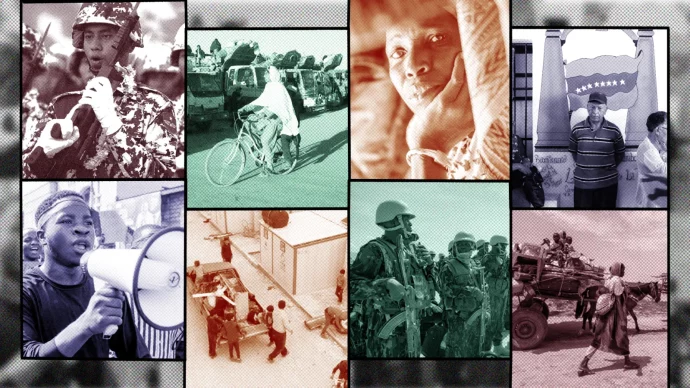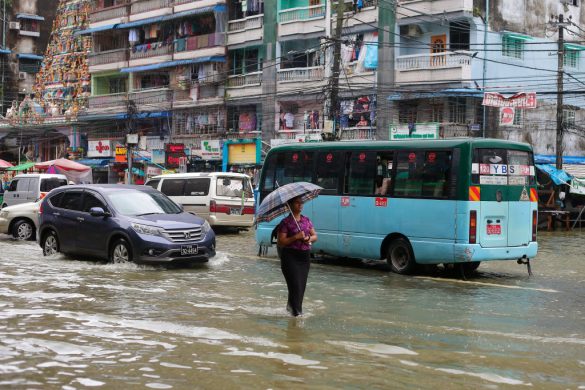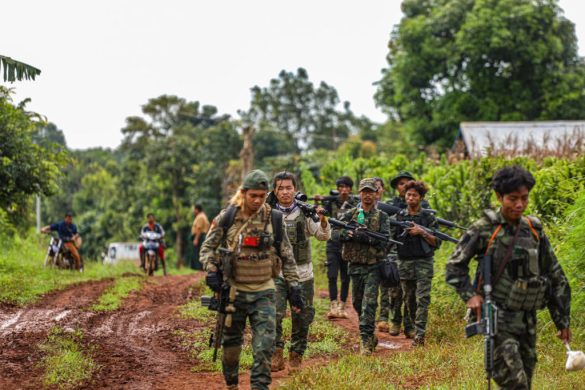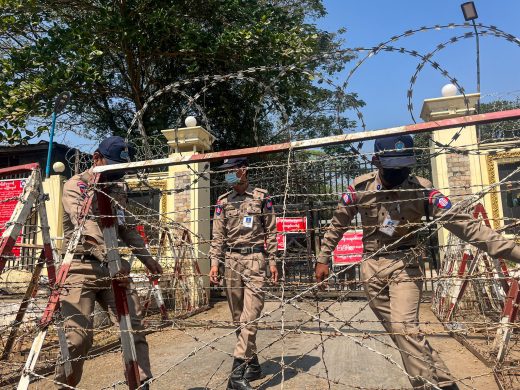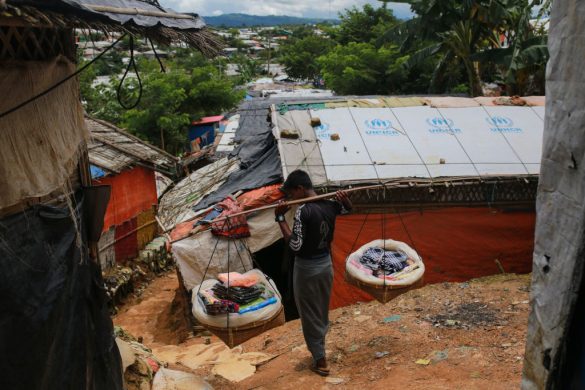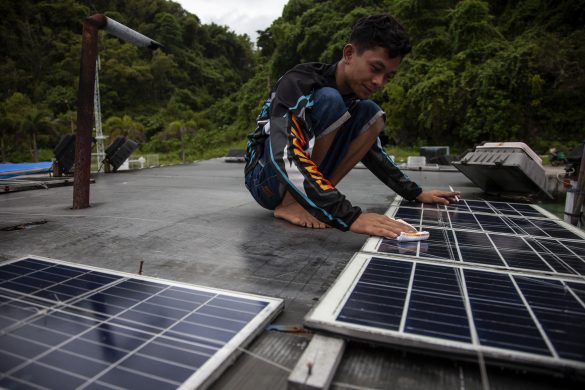NEW YORK, 12 August 2015 (UN News): Just back from Myanmar’s flood-hit Sagaing Region, the United Nations Humanitarian Coordinator for the country, Renata Dessallien, described today the devastation she witnessed, saying she had been “humbled by the incredible, spontaneous public outpouring of solidarity and assistance to flood-affected communities.”
In a statement issued by the UN Office for the Coordination of Humanitarian Affairs (OCHA), Ms. Dessallien recapped her travels through Myanmar’s Kale Township, where she had visited communities affected by floods and observed ongoing relief efforts.
Hele samfund er begravet i mudder
The waters are now receding, leaving behind entire communities buried under mud and debris. Crops have been destroyed, homes have collapsed, livestock have been killed and precious belongings have been swept away.
In the latest humanitarian snapshot of the situation on the ground, OCHA and its partners in Myanmar report that, since mid-July, more than 1 million people have been critically affected by monsoonal floods and landslides. In addition, more than 687,200 acres of farmland has been damaged, and many roads and bridges were destroyed in the worst affected states and regions.
Bredt samarbejde
OCHA says that the UN and its partners, in support of the Government and in partnership with local organizations, continue to scale up the humanitarian response. More than 213,000 people have been reached with food assistance, 10,000 emergency shelters are initially planned to address housing needs in the worst affected areas, and water treatment tablet and hygiene kit distribution, as well as clean-up of wells and ponds, is ongoing throughout affected areas.
As water levels start to recede in some areas, the need for a rapid transition to early recovery and rehabilitation is critical, including in the areas of livelihoods and supporting the Government in restoring essential services, according to OCHA. At the same time, the UN humanitarian wing warns that a low-pressure system has formed in the north-western part of the Bay of Bengal and could bring strong winds and heavy rainfall to the Ayeyarwady Region and the southern coast of Rakhine state, with widespread rain throughout the country’s states and regions.
Massiv lokal indsats i det humanitære arbejde
In her remarks, Ms. Dessallien underscored that the people of Myanmar are among the most generous in the world. The masses of volunteers, staff of local organizations, authorities, private sector, non-governmental organizations (NGOs), celebrities and ordinary people, in their caring and generosity, dedication and courage “are showing the true spirit of Myanmar.”
She thanked the international community, particularly regional and traditional donor countries, which have been quick to fund immediate life-saving assistance and have pledged to provide support to the recovery and reconstruction efforts in the longer term.
Government officials, several ambassadors, NGOs and UN colleagues accompanied the humanitarian coordinator on her visit.
The UN is currently providing $10 million in flood assistance across the country, representing, thus far, half the total international response. While, to date, the basic needs of the flood-affected people are being met, the rainy season is not over.
“We are concerned with reports forecasting additional rains. We must sustain our efforts both to meet immediate needs, as well as to ensure that people, whose assets and livelihoods have been lost, can quickly recover,” Ms. Dessallien concluded.




